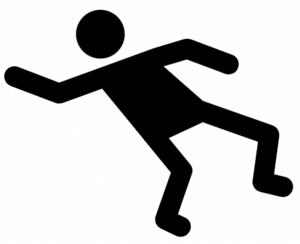Excitement About Dementia Fall Risk
Excitement About Dementia Fall Risk
Blog Article
What Does Dementia Fall Risk Mean?
Table of ContentsThe Definitive Guide for Dementia Fall RiskNot known Factual Statements About Dementia Fall Risk 7 Easy Facts About Dementia Fall Risk DescribedThe Basic Principles Of Dementia Fall Risk
An autumn risk assessment checks to see just how most likely it is that you will fall. It is primarily provided for older adults. The analysis normally consists of: This includes a series of inquiries regarding your overall health and if you've had previous falls or issues with equilibrium, standing, and/or strolling. These devices examine your toughness, equilibrium, and gait (the means you stroll).STEADI includes testing, analyzing, and intervention. Interventions are recommendations that may reduce your danger of dropping. STEADI consists of 3 actions: you for your danger of succumbing to your danger aspects that can be improved to attempt to protect against drops (for instance, equilibrium problems, damaged vision) to lower your threat of dropping by using reliable methods (as an example, offering education and sources), you may be asked several concerns consisting of: Have you dropped in the past year? Do you really feel unsteady when standing or walking? Are you stressed over dropping?, your copyright will certainly test your strength, equilibrium, and stride, utilizing the adhering to loss analysis devices: This examination checks your gait.
If it takes you 12 secs or even more, it may mean you are at higher threat for an autumn. This examination checks toughness and balance.
The positions will certainly get more difficult as you go. Stand with your feet side-by-side. Relocate one foot halfway forward, so the instep is touching the large toe of your other foot. Move one foot totally in front of the various other, so the toes are touching the heel of your other foot.
Dementia Fall Risk Fundamentals Explained
The majority of drops take place as an outcome of numerous adding factors; therefore, taking care of the risk of falling starts with recognizing the elements that contribute to fall threat - Dementia Fall Risk. Several of the most pertinent risk aspects include: Background of prior fallsChronic medical conditionsAcute illnessImpaired stride and equilibrium, reduced extremity weaknessCognitive impairmentChanges in visionCertain risky drugs and polypharmacyEnvironmental elements can additionally increase the risk for drops, consisting of: Poor lightingUneven or harmed flooringWet or unsafe floorsMissing or harmed hand rails and order barsDamaged or incorrectly fitted devices, such as beds, mobility devices, or walkersImproper usage of assistive devicesInadequate guidance of the individuals living in the NF, consisting of those who exhibit hostile behaviorsA effective loss threat management program calls for a complete scientific assessment, with input from all participants of the interdisciplinary group

The care plan need to likewise consist of interventions that are system-based, such as those that advertise a secure setting (suitable illumination, handrails, get bars, etc). The efficiency of the interventions ought to be evaluated regularly, and the treatment plan changed as necessary to why not check here mirror modifications in the fall threat assessment. Applying a fall danger management system utilizing evidence-based best practice can decrease the prevalence of falls in the NF, while limiting the potential for fall-related injuries.
The smart Trick of Dementia Fall Risk That Nobody is Talking About
The AGS/BGS guideline recommends screening all grownups aged 65 years and older for fall risk each year. This screening includes asking individuals whether they have fallen 2 or even more times in the previous year or sought medical attention for a loss, or, if they have not dropped, whether they feel unstable when walking.
Individuals who have actually fallen as soon as without injury should have their balance and stride examined; those with stride or equilibrium irregularities should receive added analysis. A history of 1 autumn without injury and without gait or equilibrium problems does not necessitate more evaluation beyond continued annual fall danger screening. Dementia Fall Risk. A fall threat analysis is needed as component of the Welcome to Medicare examination

Not known Facts About Dementia Fall Risk
Documenting a falls background is just one of the quality signs for fall avoidance and management. An important part of threat analysis is a medicine review. A number of classes of drugs increase fall danger (Table 2). copyright medicines specifically are independent predictors of drops. These medicines often tend to be sedating, alter the sensorium, and impair balance and stride.
Postural hypotension can frequently be minimized by minimizing the dosage of blood pressurelowering medications and/or quiting medications that have orthostatic hypotension as an adverse effects. Use above-the-knee support hose pipe and copulating the head of the bed boosted might also lower postural decreases in blood pressure. The suggested aspects of a fall-focused physical exam are displayed in Box 1.

A TUG time higher than or equivalent to 12 seconds suggests high autumn risk. Being incapable to stand up from a chair of knee height without using one's arms suggests boosted fall threat.
Report this page